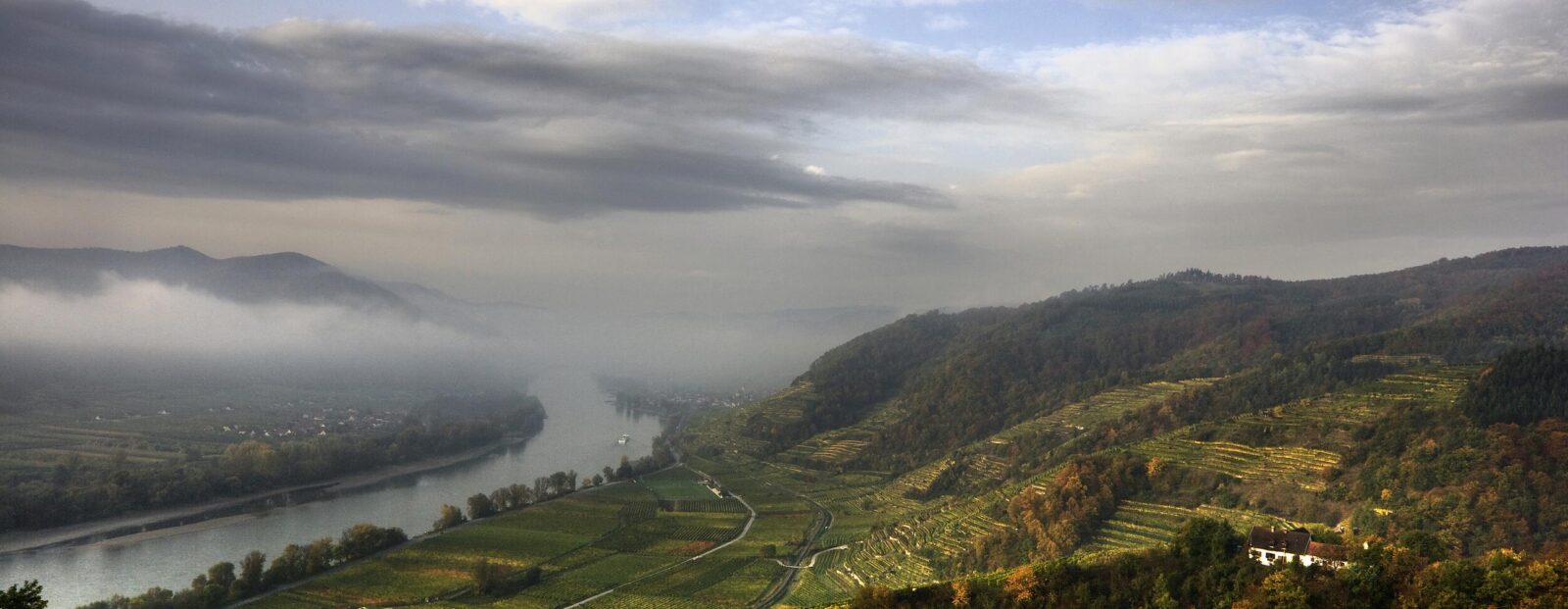
No, this isn’t a flashback to the 1960s – we’re talking about an Austrian wine made from that country’s “signature” grape: Grüner Veltliner (Gru Ve). Although Grü Ve is planted throughout much of the country, we’ll focus on the Wachau region.
- Now, many people roll their eyes at the notion of Austrian wines, but there are some really nice wines to be had for great prices.
- Austria’s vineyards are located in the warmer, flatter eastern part of the country, which provides a great climate for vineyards. Think of rolling hills and warm, dry weather, not cold, snowy Alps.
- Let’s get this out of the way up front: Austrian wines are very different from German wines. Austrian wines are fuller bodied and fruitier than German wines. In particular, the Austrian reds tend to be bold, lip-smacking wines, while the German reds are light and austere. In fact, we've had some stellar Cabs from the Burgenland region.
Our wine of the week, discussed below, highlighted an interesting wine quirk. Unquestionably, the wine was of good quality - no flaws and typical for the appellation. But, one of our tasters thought it was a very pleasant wine, while the other pushed her glass away after one taste and pronounced it undrinkable. Why? Hard to tell. Everyone perceives tastes and aromas differently - it's a matter of human physiology. At the extremes, some people are unable to detect certain specific things that others find off-putting. Was that the case here? Who knows. But it makes the point that wine is personal - you should pick the wines that you like and not be swayed by the opinions of wine critics or 100 point ratings.
But I digress. The Wachau is Austria’s most famous wine region, but produces only about three percent of country’s wine. It’s Austria’s westernmost and coolest region, located in the Danube Valley. As you can see from the picture above, the vineyards tend to be on terraces running down to the Danube River.
- Wachau has been designated a UNESCO world heritage site. Among other historical sites, it contains the ruins of Castle Dürnstein, where Richard the Lionheart was once imprisoned. Talk about a bad day at the office – he was shipwrecked on the way to the Third Crusade and incurred the wrath of the Duke of Austria who threw him in the dungeon. Which caused the Pope to ex-communicate the Duke . . . who then extracted a large ransom for Richard’s release . . . who went back to the Crusades.
- You may find some unfamiliar terms on the label. Wachau has its own unique system of designating wines to communicate what they are like, but not all producers use it. The terms are:
- Steinfeder. An early drinking, light bodied wine with an alcohol level of 11.5 percent or less.
- Federspiel. A medium bodied wine that will age for five years, and that has an alcohol level of 11.5 – 12.5 percent.
- Smaragd. A more full-bodied wine that will age for six years or more, with an alcohol level of 12.5 percent or more.
Grüner Veltliner, a white grape that’s native to Austria, is one of the stars of Wachau, along with Riesling. It’s also the country’s most planted grape (about a third of the vineyards). It makes wines ranging from easy drinking and light bodied to full-bodied versions capable of aging a decade. Typically, the wines will have notes of stone fruit, citrus and a stimulating acidity.
Our wine of the week is a 2018 Rainer Wess Grüner Veltliner from Austria’s Wachau region ($17 Retail). We picked this wine because it’s a great introduction to Grüner Veltliner – a good quality wine from a highly rated producer. But, as you can see from the comment above, opinions may differ on this one - we'd be interested in reactions from anyone who tries it.
- Although it has 12.5 percent alcohol, it does not bear one of the three Wachau style designations. You should drink this particular wine within a year or two of the vintage date; after that it may begin to go downhill.
- It had aromas of citrus, honey and vanilla. On the palate, it had citrus, stone fruits and some minerality. It's not particularly complex, but nicely balanced.
- Try this as an aperitif, or pair it with white fish, poultry, pork, or ham. Or if you're in full Austrian mode, a Wiener Schnitzel.
Cheers.
